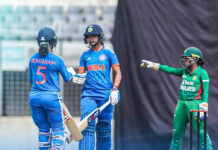Art is subjective. One might see in it, what others might not even be aware of. A good example of this is children’s media, namely movies. They are marketed to kids, but are overwhelmingly made by adults. As such, grown-ups try to inject a dimension of adulthood that might be incomprehensible to a child due to unfamiliarity. This makes watching a movie as a child, and later as an adult – two completely different experiences.
And as such, there are plenty of children’s movies that are innocent on face value, but hide a sinister layer of comprehension to them. Here are but a select few.
Coralline (2009)
When this movie came out, not many people got to see this irksome horror movie, disguising as a children’s flick, in the immersive setting of a cinema hall. But those who did, were positively mortified walking out of one of the most unsettling children’s movies of the last decade.
Coralline is a really good litmus test for judging what kids and adults find scary while watching illustrative depictions. A child will most likely enjoy the colourful characters and the zany visuals, while an adult will be unnerved by these very things. The movie is soaking wet in psychoanalysis. From the ‘Be Careful What You Wish For Parable’, to the shadow personas of supporting characters, to rocking buttons for eyes that will haunt you in your nightmares – there is a lot of material that will bother the adults, while the child beside them watches in glee.
Coralline is based on a book by Neil Gaiman (yes, THAT Neil Gaiman). Those aware with the writer and his body of work, will surely know the level of insanity he is capable of dispensing. Coralline checks all those boxes, and more! The titular character wishes for a family that will give her the attention she most dearly craves. When she gets her desires fulfilled though, she ends up regretting praying for such frivolity by the end.
Additionally, the film is a stop-motion animation feature. Every scene that comes off as disturbing, is even more so amplified, due to the uncanny jerks and twitches that come naturally with the traditional stop-motion. By the climax, you’ll be scratching your head, wondering HOW-ON-EARTH a movie like this even got green-lit in the first place.
Meanwhile, the child in the midst gets entertained by some really macabre animation, and lethally quirky characters.
The Dark Crystal (1982)
Shout-out to Netflix for picking up a three decade old franchise, known for its bizarre and twisted fairy-tale premise, and making it a compelling allegory for the anti-establishment revolt, through The Dark Crystal: Age Of Resistance, released earlier this year.
The original, The Dark Crystal, is a slow-burning film that becomes unsettling as the plot unfolds. Created by the people who made the Muppets, the movie aims to subvert what one thinks a puppet-centric, fantasy feature should be like.
Watching the film as an adult is very different than watching it as a kid – everything from the costume design, to the socio-political elements, will irk you in some manner or another. Clearly referencing the villains of the movie, the Skeksis, and their petrifyingly hammy portrayal – there is yet to exist a movie that has been so convincingly scary, on character design alone, as The Dark Crystal is, with its depiction of its antagonists.
The movie excels in the successfully animating the puppets, by giving them humanlike insecurities and motivations, which are just too well laid out, to be interpreted otherwise. It takes a cold, hard look at the fragile state of human societal structure, and mocks it through deconstruction.
To those looking to enjoy this magnum opus from Jim Henson and his Muppet co, be advised – it will make you think real hard, even when the lights go out.
Where The Wild Things Are (2009)
The original book by Maurice Sendak was banned from school libraries upon release, and anybody who has seen the movie, will know exactly why. Parents and educators were horrified at the subject matter of this illustrated picture book. At the same time, children flocked in anticipation to libraries, patiently waiting for their turn – to read a book about a bratty protagonist and his unruly temper.
The movie adaptation is not an honest adaptation of the book (for the most part). The book is very frugal with exposition, clocking at a little over 300 words. What it IS full of, is a raw sense of emotion – mainly ‘anger’, with a hearty dose of fascist subjugation. In that way, it is almost too dark to be a children’s book/film.
The movie also brilliantly channels this ‘feeling’, with very little dialogue to justify the malignance of the characters involved. There is arguably no ‘good’ character in the film, even the parents are two-dimensionally wicked, for sending their boy to bed without food. The ‘Wild Things’, instead of magically fixing the uncontrollable temperament of the boy, Max (like any children’s media would predictably do), come off more as an accessory to his whims.
Spike Jonze additionally bestows every Wild Thing with a facet of Max’s personality (unlike the book, where these characters mesh in motive with one another). Any adult will immediately find the feature at hand extremely problematic by the end.
But the child will have already been enchanted by some really well done animatronics, and the glorification of despotic impulses within the main protagonist.
We live in an era of jaded sensitivities. There are many such movies on the market, waiting to be dissected. It takes an eye for an eye with these. A vision to see the layers peeled back from the flowers and ribbons, and make assessments based on the horrors of real life.
















































